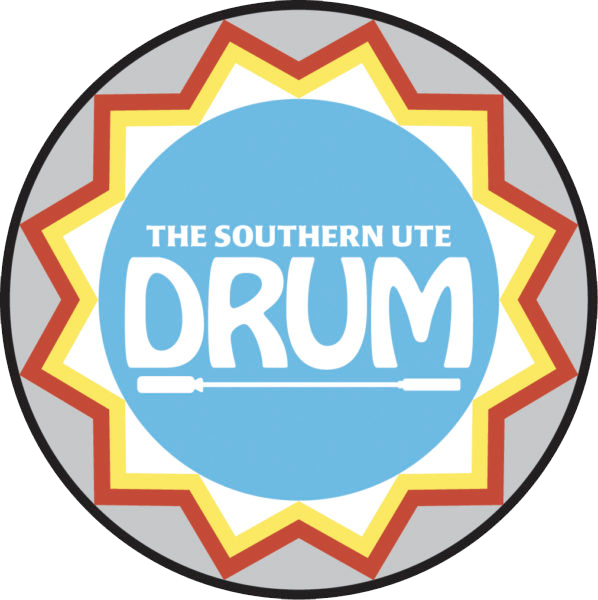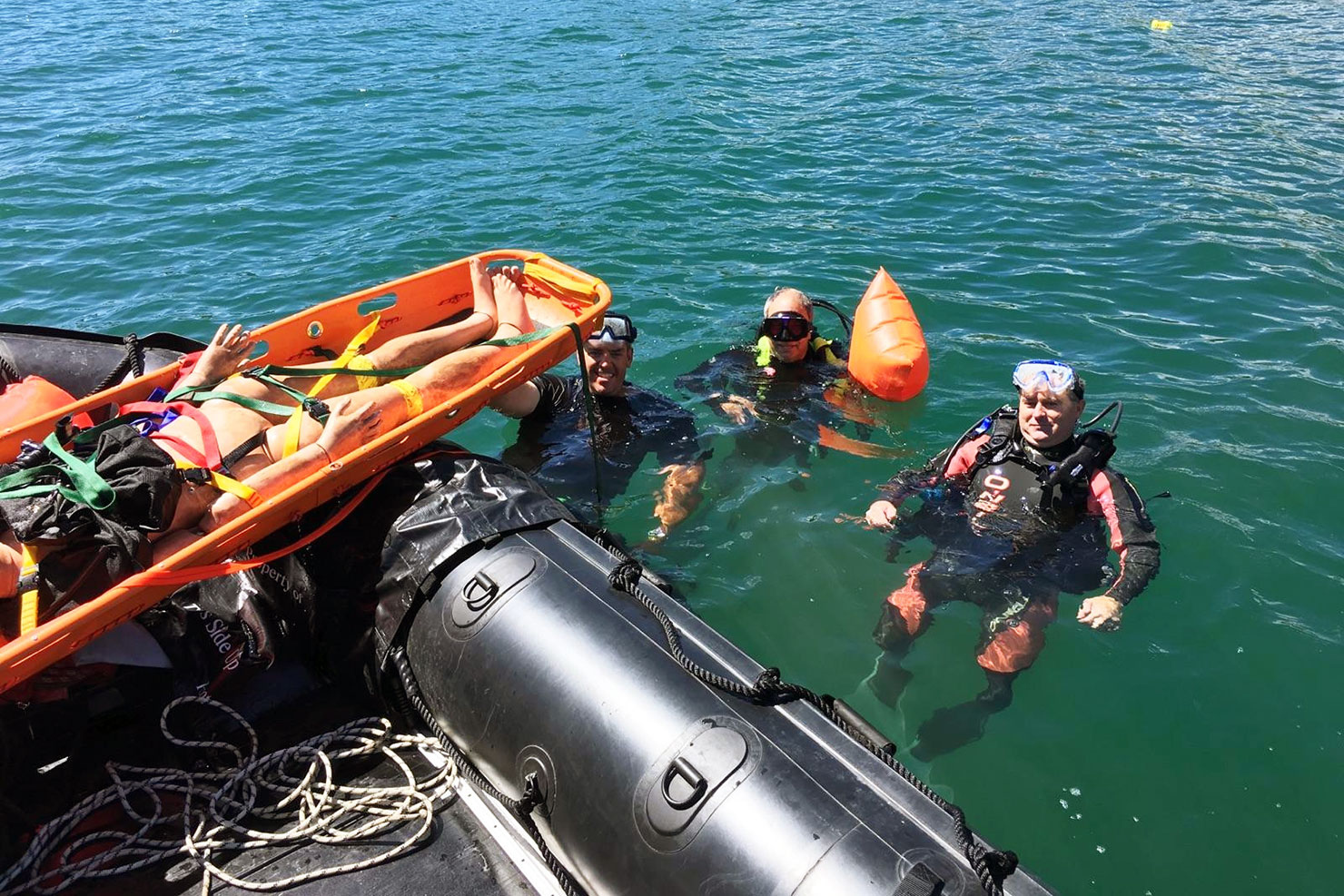A hand rises from the silt, its fingers raised upwards towards the light. The water swirls around the lakebed and the view of the whole mannequin emerges. We push the mesh bag down to the lakebed and begin the task of recovering the “victim”. As soon as we make contact with the bottom, our fins kick up the silt and it becomes as dark as night with no way to see your own hand in front of your face. The work quickly deteriorates into feeling the bag and the buckles to slide the mannequin into the bag and fastened it down for its trip upward. Soon the lift bags are attached and the “victim” rises towards the surface and we complete the recovery.
In August, the Four Corners Dive Team trained and practiced alongside the New Mexico State Police Dive Team. Trainings were held at the South end of Navajo Lake and at Lake Nighthorse, Durango, Colo. This training included Southern Ute Police personnel working alongside Los Pinos Fire and La Plata County Sherriff personnel. The teams were joined for a single day by Southern Ute tribal member Raymond Baker for some technical training and planning. Baker has thirty years of experience in the Navy working in search and rescue across the world.
The technical training included reading the screen of the Lowrance sidescan sonar to understand the bottom of the lake and features. Teams practiced searching for the outline of a sunken houseboat in 150 feet of water in Lake Navajo. They spent time along the shorelines looking at the mannequin, trees, boulders and other items to see how to interpret each item correctly as the boat passed over them.
The dive team received permission to use Lake Nighthorse while it was closed to the public, during that time the water level was incredibly clear. As the dive teams passed over submerged forty foot tall pines, they could see all the branches even down to the trunk and lakebed fifty feet below. The water temperature was a comfortable 72 degrees at the surface but a frigid 40 degrees forty feet down. The intense cold brought new challenges in getting the work done because of near freezing water with less manual and mental dexterity.
The new dive team is coming together with boat operations and dive operations receiving training and equipment. Over twenty personnel from different agencies have expressed interest in becoming part of the team. More trainings are being planned so the team can be ready to serve when the need arises.

